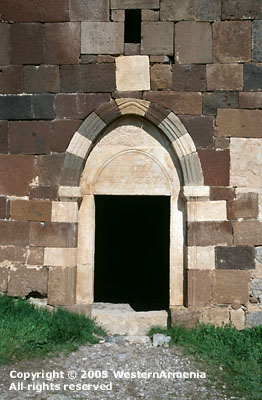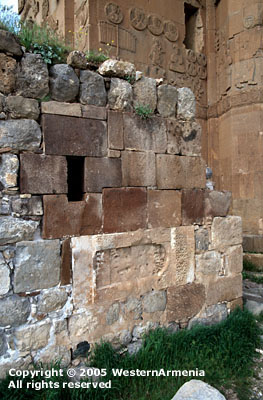|
Western Armenia |
|
The Surp Hach (Saint Cross) church on the Akhtamar (Ahtamar or Akdamar in Turkish) island on the Lake Van. |
|
View of the Akhtamar (Ahtamar). |
|
View of the south-eastern part of island and the church. |
|
View of the church from the ruins of monastery. |
|
The church from the North-West. |
|
View of the church from the South-West. |
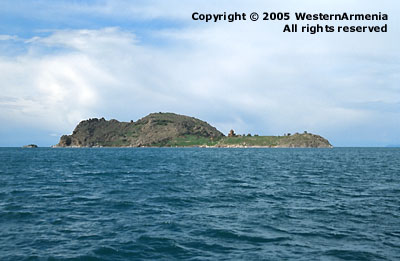
|
Aghtamar church is richly decorated with bas-reliefs depicting apostles, saints and the scenes from the Old and New Testaments. The church is encircled by four friezes with vegetative ornaments under the windows; vine and scenes of agricultural works above the windows; running animals and male faces on the roof edges and the drum. |
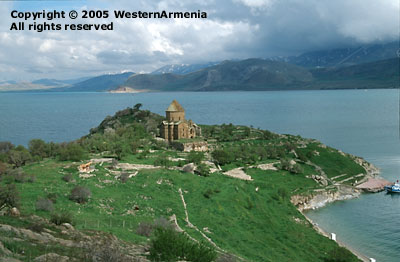
|
The Surp Hach (Saint Cross) church is one of the jewells of Armenian architecture. It is situated in the beautiful place some kilometers away from the southern shore of the Lake Van. To the North from the island one can see mirror-like surface of the Lake Van with a snowy crown of Suphan mountain on the opposite shore, and forbidding Rshtunik mountains range to the East.
The church was built by the architect named Manuel in 915-921 AD, during the rise of Vaspurakan Kingdom. It was intended to be a part of a summer residence of the King Gagik Artsruni, and perhaps due to this fact this church is marked out among many others.
The church is remarkable by posessing only two small side-apsides on its eastern side and none on the western side. Usually there are four side-chapels on every corner of an Armenian church, so that the building has a rectangular shape from outside. |
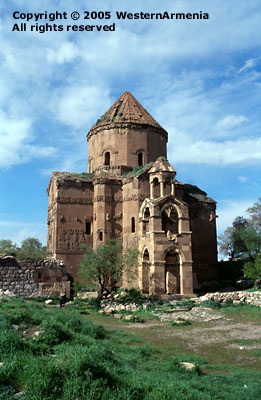
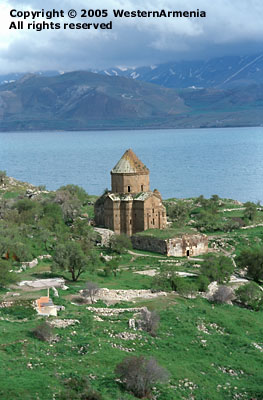
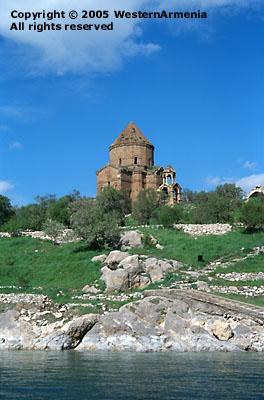
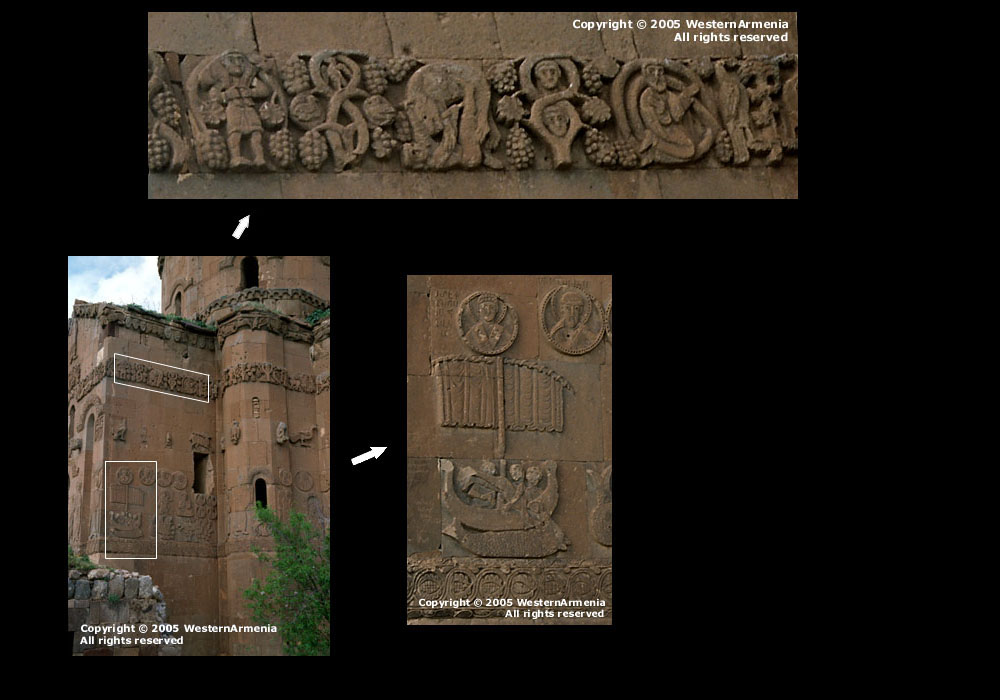
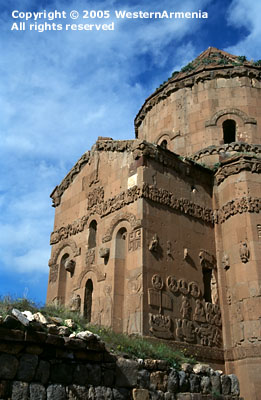
|
The church's walls keep fragments densely bespread with bas-reliefs. On the image in the middle is Jonah and the Whale, the scene from the Old Testament. |
|
Originally there were no ancilliary buildings. In the XIV century chapel at the northern side was added on and four centuries later appeared zhamatun and bell-tower. At the southern and western entrances there were dark tufa blocks ornamented with crosses which with time were partially concealed by later annexes. |
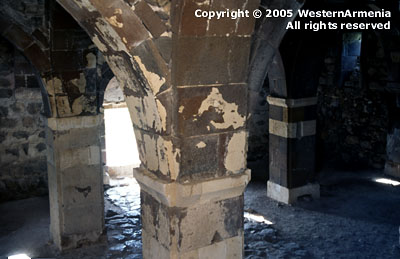
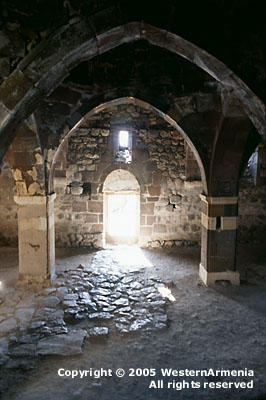
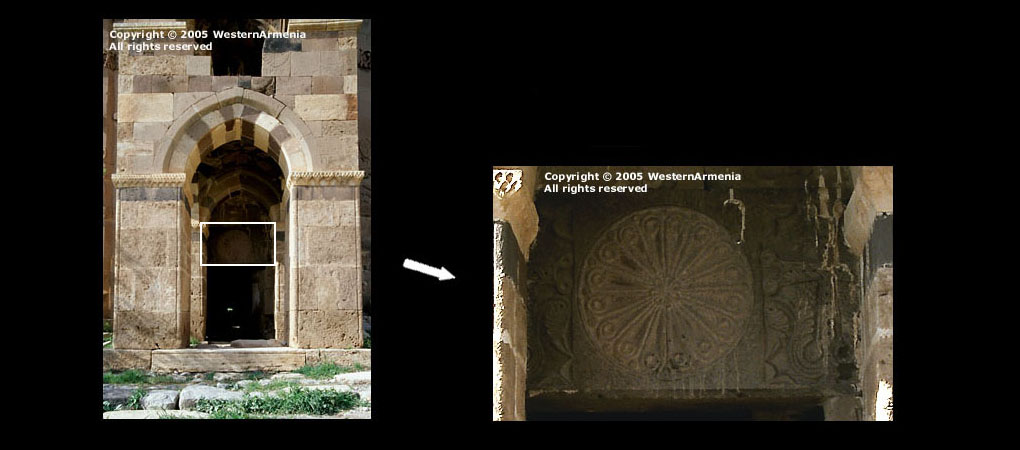
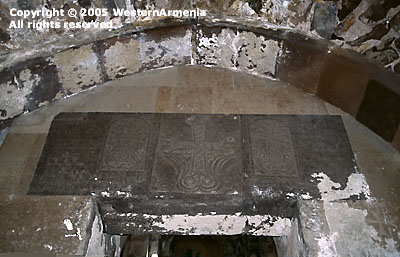
|
Zhamatun entrance. View from the porch. |
|
Zhamatun. View from the south-east. |
|
Western entrance from zhamatun' s side. |
|
Ornamented block above the southern entrance partially concealed by later built bell-tower. |
|
Frescoes still preserved inside the church is another peculiarity that distinguishes this church from traditional Gregorian churches. A few churches with frescoes are known to me: Tatev, Akhbad, Church of Grigor Lusavorich in Ani (at that time Ani was governed by Georgians, so the frescoes keep features of rather Georgian than Armenian style), Echmiadzin cathedral (with frescoes of completely different type largely ornamented in Persian style). |
|
Frescoes are preserved on a small part of the walls' surface. |
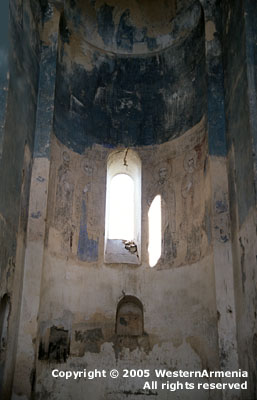
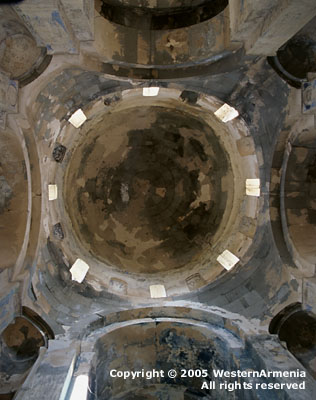
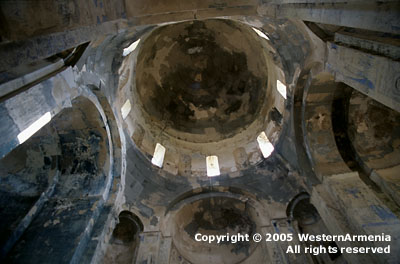
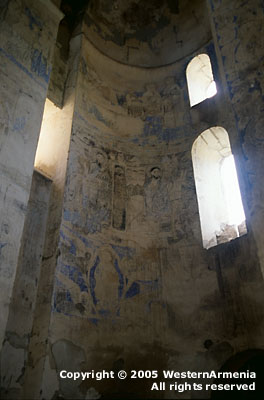
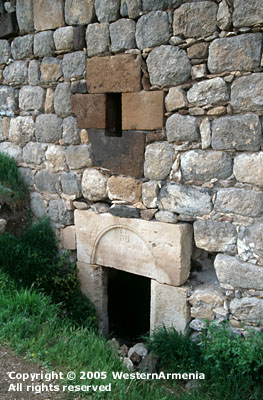
|
Zhamatun (church vestibule) entrance from the South. |
|
Main zhamatun entrance, view from the west. |
|
Khatchkar in the southern wall of the zhamatun. |
